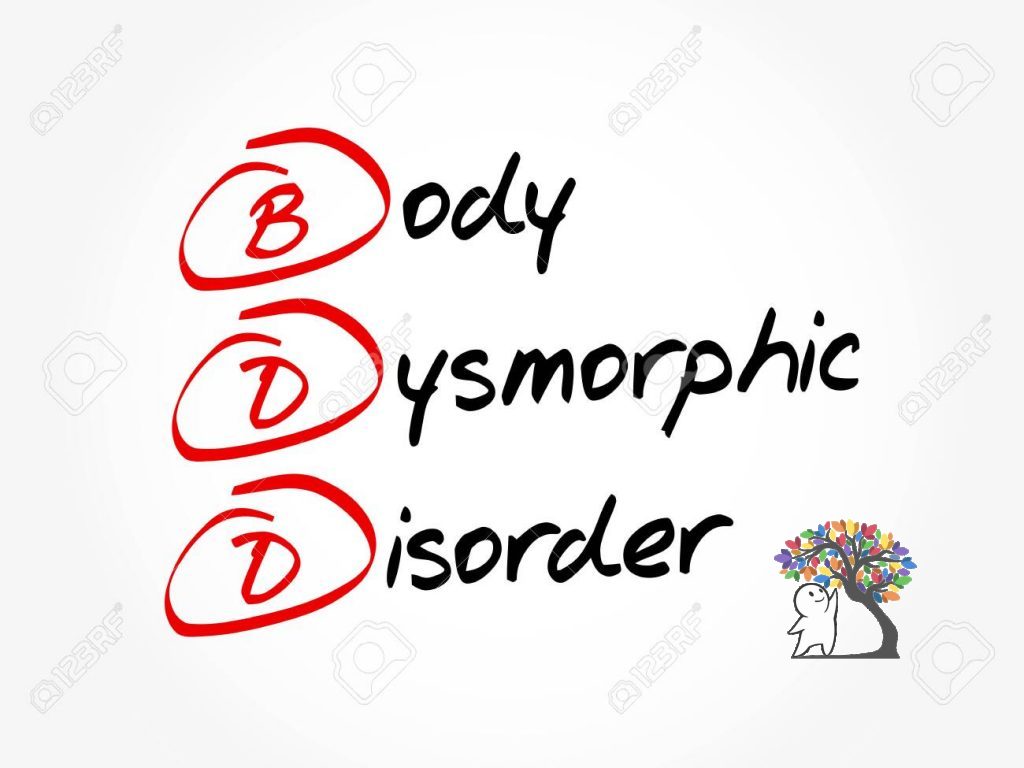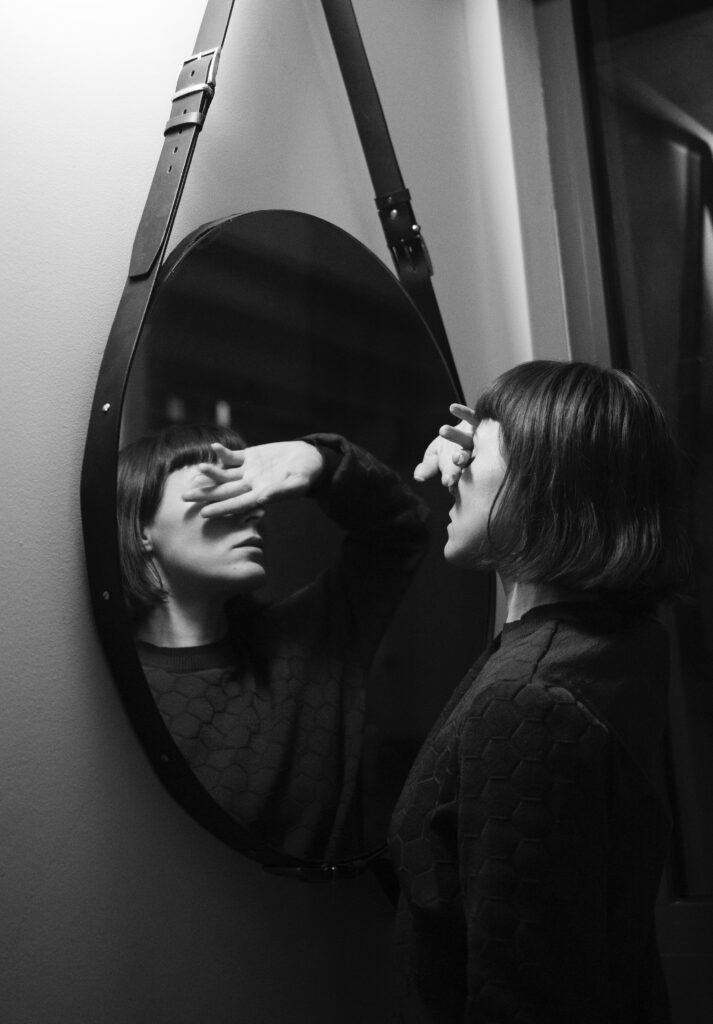Body Dysmorphic Disorder: What Is It Anyway?


Body Dysmorphic Disorder (BDD) is a mental health disorder which is characterised by obsessing over perceived flaws which are related to the body. Generally, it’s been found to affect 2.4% of the population, and, despite the stereotypes, it affects both men and women (Bjornsson, Didie & Phillips, 2010). In men, it tends to present as muscle dysmorphia (Phillips, 2009). BDD tends to be pretty underdiagnosed for a wide range of reasons, including that it is often misdiagnosed. This article will explore in depth what BDD is. It’ll look at the diagnostic criteria, possible causes, treatment, misdiagnoses are common, and finally what it is often comorbid with.
Diagnosis
The DSM is the manual used to diagnose mental health conditions and disorders. BDD is characterised in the DSM as an OCD-spectrum disorder, and it is distinctly different to eating disorders like anorexia nervosa. The criteria for a diagnosis is as follows: 1) Appearance Pre-occupation (pre-occupied by one or more “unreasonable” flaws), 2) repetitive behaviour (for example: mirror checking, excessive grooming, skin picking, reassurance seeking, clothes changing etc.), 3) clinical significance (there must be a clinical amount of distress at the symptoms), and finally, 4) these symptoms must not be due to an eating disorder.
Scale
So how do clinicians and doctors go about assessing these symptoms? A scale is generally used, which is often the case with diagnosing mental health disorders. Specifically, the BDD Questionnaire tends to be used.
Causes
Do we know anything about the possible causes of BDD? It seems, like with many complex mental health disorders, that the causes are a combination and interaction of many factors (Phillips, 2009). BDD tends to develop during early adolescents (Phillips, 2004), however it can develop later as well. It has been found that often before the onset of BDD, the individual will have social anxiety. To look at just how hereditary BDD is, twin studies have been conducted. It was found that BDD had a heritability of about 43% (Browne, Gair, Scharf & Grice, 2014). Possible factors in causing BDD include, but are not limited to: introversion (Veale, 2004), negative body image & perfectionism (Hartmann, 2014), heightened aesthetic sensitivity (Feusner et al, 2010) and childhood abuse (Feusner et al, 2014).
Treatment
What can be done once BDD has been diagnosed? There are treatments available for people with BDD, with differing success depending on the patient. Generally, in terms of therapy, cognitive behavioural therapy seems to be best for BDD (Phillips, 2004). Often, this is also coupled with medication, with Selective Serotonin Reuptake Inhibitors being the most effective (Phillips, 2004). Giving the patient psychoeducation before treatment begins also seems to have a positive effect (Phillips, 2004).
Misdiagnosis
As mentioned, BDD is often misdiagnosed at first and this tends to be because there are a lot of shared symptoms with other disorders. Also there is a lack of knowledge of BDD among clinicians. The disorders BDD is often misdiagnosed as include: social anxiety, OCD, Major Depressive disorder, or social anxiety (Phillips, 1994). It can also be misdiagnosed as an eating disorder or a body-focused repetitive behaviour disorder.
Co-Morbidity
Finally, it is also common that people with BDD have different disorders as well. This is known as having a “comorbid” disorder. Often, people with BDD also suffer from eating disorders (32.5% – Ruffolo et al, 2005), or OCD (8% – Brawman-Mintzer et al, 1995).
To learn more about BDD – pe-order issue 15 of our magazine at our Patreon! Click here:
and pledge before 9/30/2019!
Check out our other magazines at our store
References
Bjornsson AS; Didie ER; Phillips KA (2010). “Body dysmorphic disorder”. Dialogues Clin Neurosci. 12 (2): 221–32.
Katharine A Phillips, Understanding Body Dysmorphic Disorder: An Essential Guide (New York: Oxford University Press, 2009), pp 50–51
Katharine A Phillips, “Body dysmorphic disorder: Recognizing and treating imagined ugliness”, World Psychiatry, 2004 Feb;3(1):12-7.
Browne, Heidi A.; Gair, Shannon L.; Scharf, Jeremiah M.; Grice, Dorothy E. (2014-01-01). “Genetics of obsessive-Compulsive Disorder and Related Disorders”. Psychiatric Clinics of North America. 37 (3): 319–335.
Veale D (2004). “Body dysmorphic disorder”. British Medical Journal. 80 (940): 67–71.
Hartmann, A (2014). “A comparison of self-esteem and perfectionism in anorexia nervosa and body dysmorphic disorder”. Journal of Nervous and Mental Disease. 202 (12): 883–888.
Feusner, J.D.; Neziroglu, F; Wilhelm, S.; Mancusi, L.; Bohon, C. (2010). “What causes BDD: Research findings and a proposed model”. Psychiatric Annals. 40 (7): 349–355.
Katharine A Phillips. The Broken Mirror. Oxford University Press, 1996. p. 47.
Ruffolo, J., Phillips, K. A., Menard, W., Fay, C., & Weisberg, R. B. (2006). Comorbidity of body dysmorphic disorder and eating disorders: severity of psychopathology and body image disturbance. International Journal of Eating Disorders, 39(1), 11-19.
Brawman-Mintzer, O., Lydiard, R. B., Phillips, K. A., Morton, A., Czepowicz, V., Emmanuel, N., . . . Ballenger, J. C. (1995). Body dysmorphic disorder in patients with anxiety disorders and major depression: A comorbidity study. The American Journal of Psychiatry, 152(11), 1665-1667.





Responses